Go to All Blogs | Birding in Norfolk Blog | Our UK Office | Norfolk Birding Day Tours | UK Birding Tours
European Birding Tours | All our Birding Tours
Posted on 09 June 2021, updated 19 June 2025
Andy Walker offers some thoughts on the common farmland and woodland birds of the UK in the second of three blog posts on the common birds of the UK.
The following species are commonly found in farmland and woodland within the UK. We spend plenty of time birding in these habitats (as well as many others) on our UK: England in Spring Birding Tour, UK: Highlands and Islands of Scotland Birding Tour and UK: England Fall Migration Special Birding Tour, as well as our Norfolk Day Tours, Suffolk Day Tours and Cornwall Day Tours, so the birds highlighted here feature prominently on these British birding tours. Many of these species also occur on our other European birdwatching tours, so lots of opportunities to look for these great birds.
We hope the photos and information below, showcasing some of the commonest farmland and woodland birds of the UK, inspires you about some of the amazing birds possible with minimal effort, lets dive right in now…
Yellowhammer, Emberiza citronella (UK Red List: Birds of Conservation Concern 5)
A gorgeous bunting with a bright yellow head that although has declined dramatically, is still fairly common across most of the UK, particularly in farmland habitats. They are not particularly shy, they like sitting out in the open for example, but do often flush rather easily. Their song is one of the more well-known sounds in the British countryside and can be likened to “a little bit of bread and no cheese”, a nice easy one to learn and is still a common sound of the spring and summer.
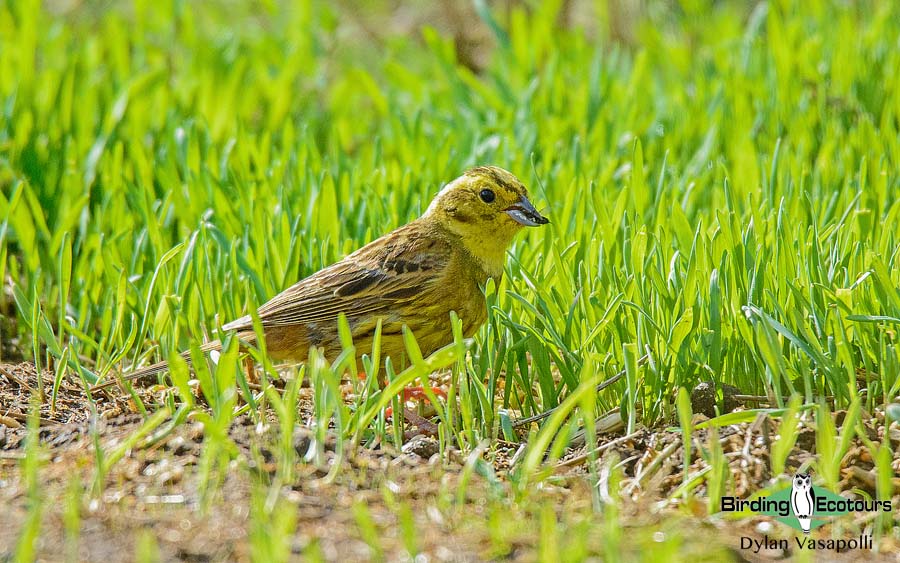 A male Yellowhammer displaying his bright yellow head and reddish-brown rump.
A male Yellowhammer displaying his bright yellow head and reddish-brown rump.
Eurasian Bullfinch, Pyrrhula pyrrhula (UK Amber List: Birds of Conservation Concern 5)
Often shy and best found by its melancholy call as they move through woodland and farmland and occasionally come into gardens. The male has instantly recognizable pink-red underparts and black crown and is one really attractive bird. Always enjoyed by birders visiting the UK with numbers increasing during the winter as birds from Europe move across to escape the cold of the continent.
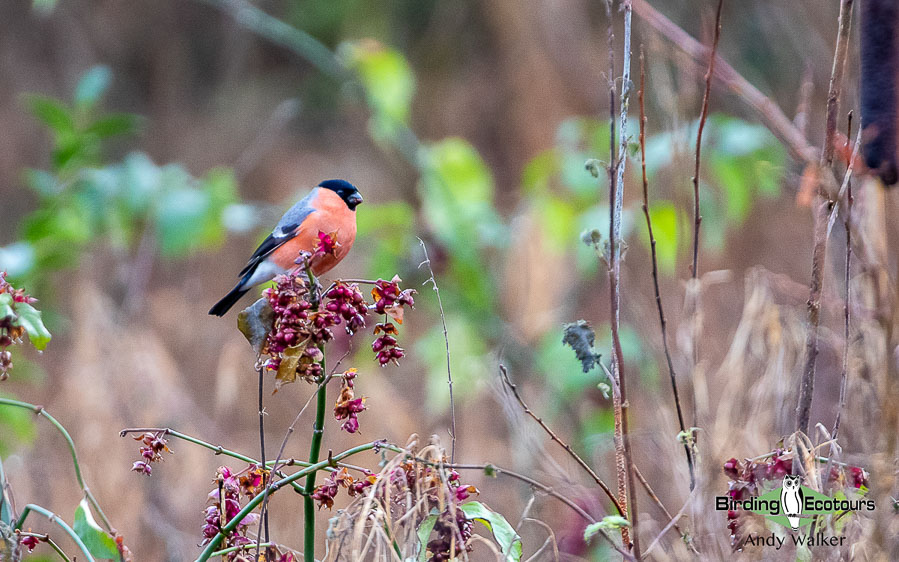
Brambling, Fringilla montifringilla
Similar to Common Chaffinch (with which it often associates) but instantly recognizable its their white rump in all plumages – it’s a stunning bird. As with several of the common birds outlined in this blog series, they are often first found by their distinctive calls. This species is most likely on our UK winter set departure and non-breeding season Norfolk day tours.
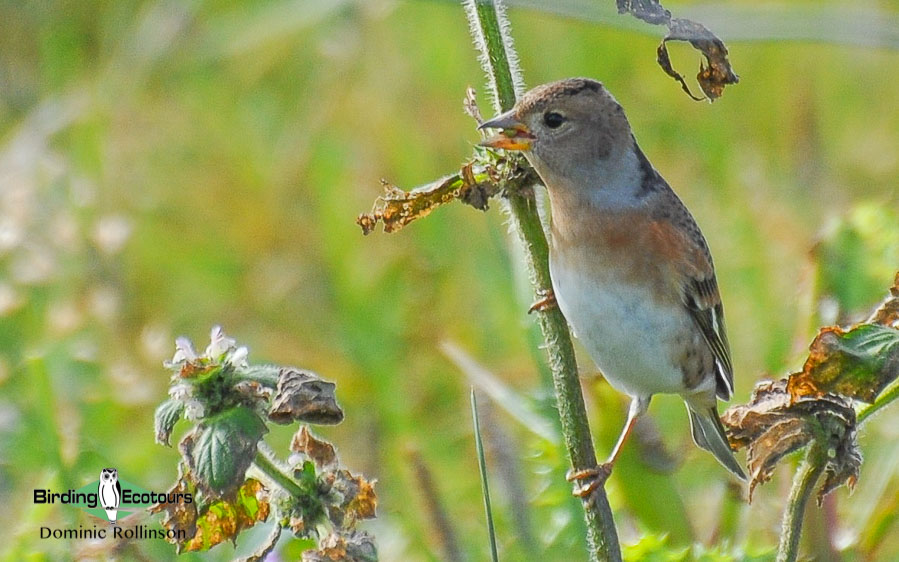
Eurasian Siskin, Spinus spinus
Common in woodland and farmland, often appearing in gardens at bird feeders during the winter months. Particularly fond of birch, willow, and alder trees, and flocks feeding on their seeds are always worth scanning for scarcer species such as redpolls. Such an attractive bird, note the very fine bill used to extract small seeds from their preferred trees.
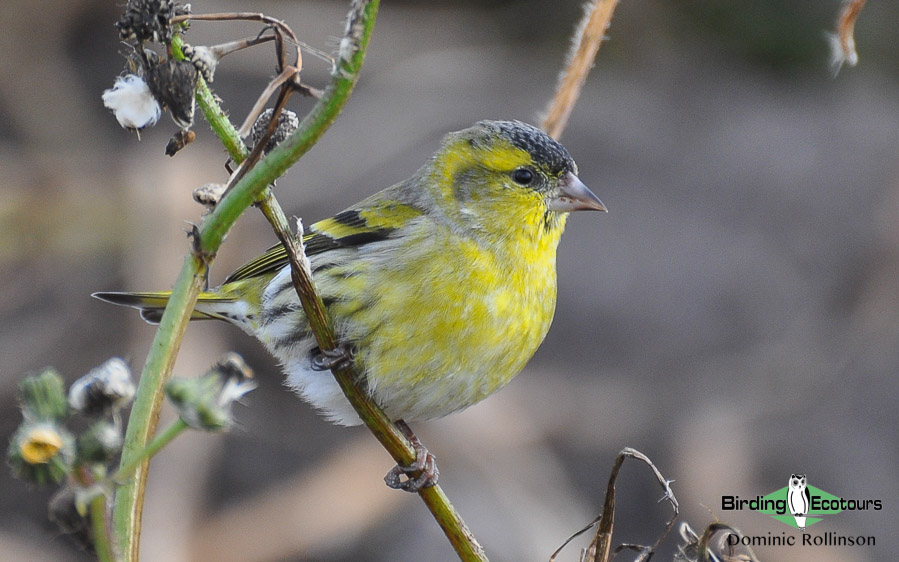
Eurasian Jay, Garrulus glandarius
A really striking bird and lover of acorns! A beautiful corvid with a very distinctive, harsh, hoarse scream! Despite their size, color, and loud voice they are often quite shy and secretive and are easier seen in winter when there are less leaves on the trees.
Redwing, Turdus iliacus (UK Amber List: Birds of Conservation Concern 5)
An abundant winter visitor to the UK from continental Europe and Iceland. Rather similar in size and appearance to Song Thrush but note the buffy supercilium and red flank flashes. Listening to the “seeping” sound of thousands of these birds migrating at night is a real thrill. Often found in large flocks with Fieldfare (shown below) as well as continental Common Blackbirds and Song Thrushes. Always fun to find these on our winter UK (birding in England) and Norfolk winter day tours.
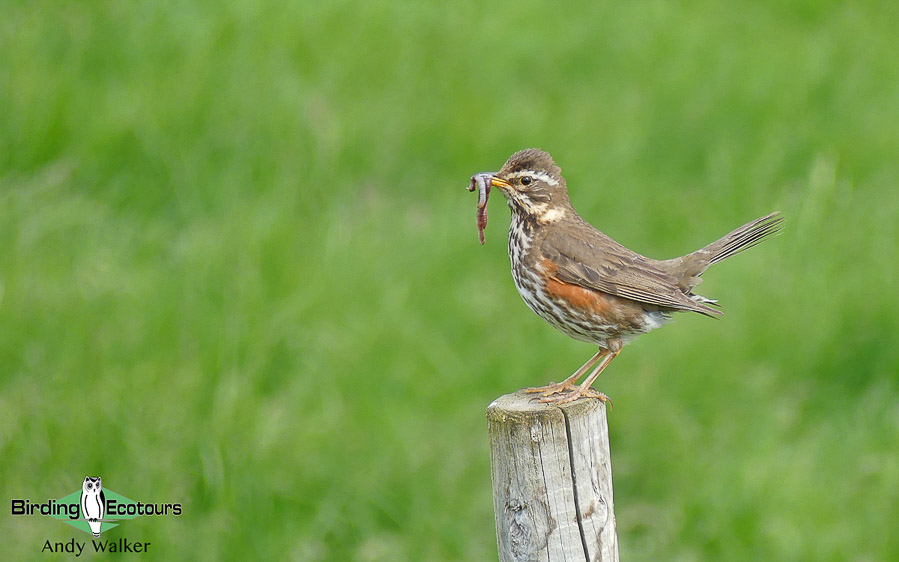
Fieldfare, Turdus pilaris (UK Red List: Birds of Conservation Concern 5)
A stocky and attractive thrush often located by their harsh chattering “schack-schack-schack” call. Usually found in mixed-thrush flocks including Redwing, Song Thrush, and Common Blackbird. Thousands migrate to the UK during the fall and spend the winter roving around moving between suitable food sources. A definite highlight during our fall and winter UK birding tours.
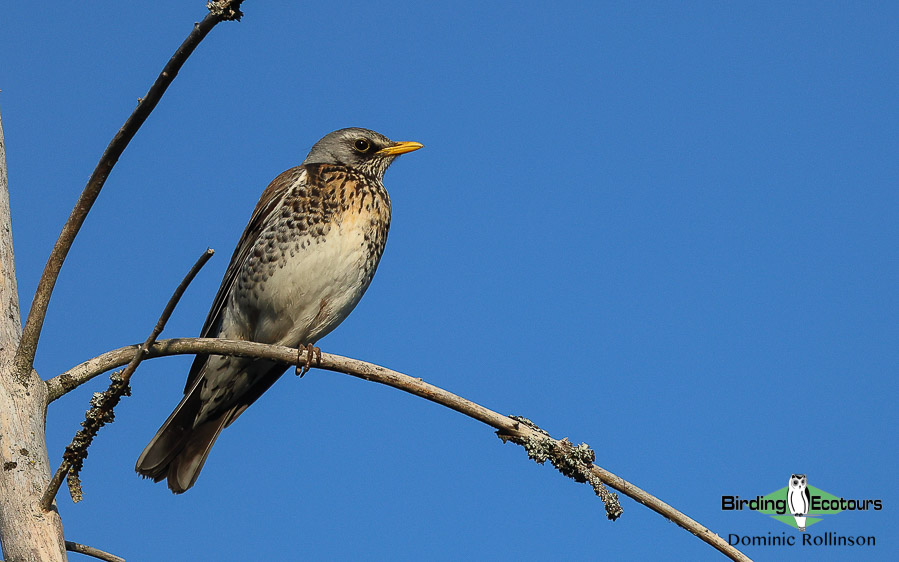
Goldcrest, Regulus regulus
Europe’s smallest bird at 3.3-3.7 inches (8.5-9.5 centimeters) often found by their thin and high-pitched calls. Amazingly, this tiny species is migratory in part of its range as these little jewels fly across to the UK from continental Europe in the fall and numbers swell during our winter tours when they can turn up almost anywhere. It is also a very common breeding species in suitable habitat.
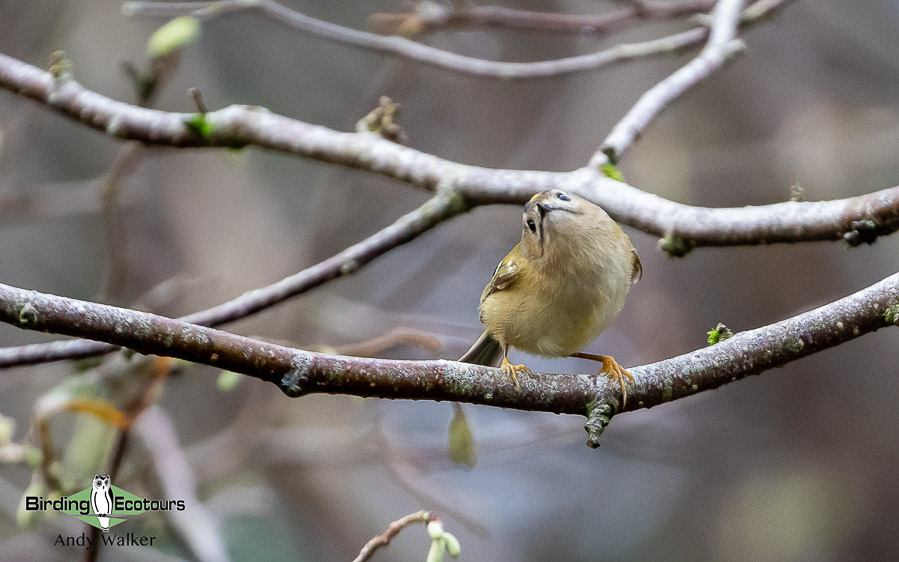
Eurasian Nuthatch, Sitta europaea
A common woodland resident across the south and east of the UK. A small bird with a really loud and rich call, often given up high from the canopy. They can occasionally become habituated to people and show really well. They have an ability to climb downwards head-first which is a unique feature for birds in the UK.
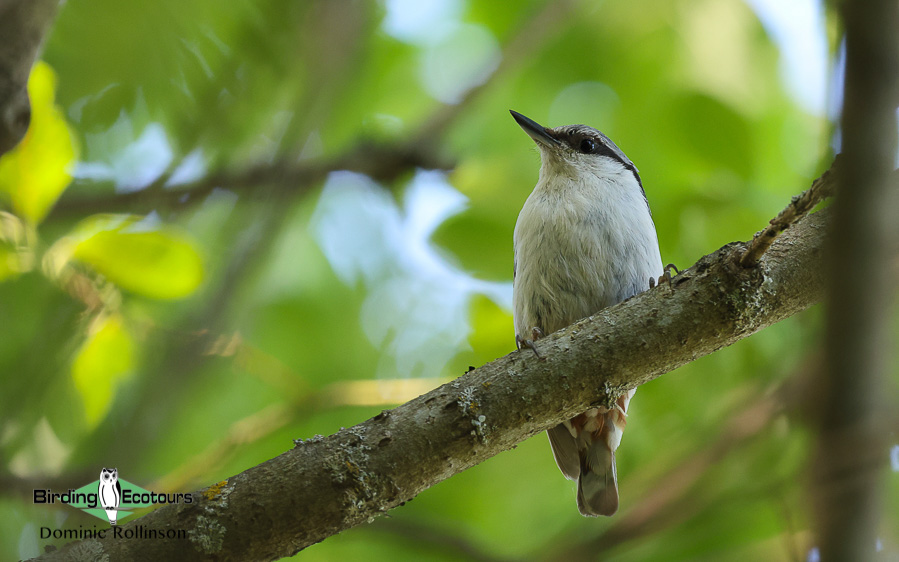
European Green Woodpecker, Picus viridis
A very large woodpecker and like other members of its genus, spends considerable amounts of time foraging on the ground, feeding on ants. Their laughing call is unique in the UK and often gives their presence away, though they can be rather shy. They are found in open deciduous and mixed woodlands across much of the UK, also venturing into large gardens. A really attractive bird when seen well.
Common Redstart, Phoenicurus phoenicurus (UK Amber List: Birds of Conservation Concern 5)
Nothing like the redstarts of the Americas (which are actually part of the New World Warblers family), redstarts in the Old World are members of the Chats and Old World Flycatchers family. Although common enough in the UK, they are generally rather unobtrusive during the breeding season, keeping to trees and bushes. During passage seasons, they can be much more visible, especially at coastal locations. This species breeds in Europe but spends the non-breeding season in sub-Saharan Africa.
Stock Dove, Columba oenas (UK Amber List: Birds of Conservation Concern 5)
A much-overlooked common farmland bird that at a quick glance could be mistaken for a Rock Dove (Feral Pigeon). Not as common as Common Wood Pigeon or Eurasian Collared Dove but still common enough to make this run down of birds we will easily see on our British birding tours. Widespread across most of the UK.
Common Cuckoo, Cuculus canorus (UK Red List: Birds of Conservation Concern 5)
This species is the sound of summer in the UK. While you will not get this bird on our fall or winter birding tours, you should get it on our spring and summer UK birdwatching tours. This long-distance migrant spends the non-breeding season in sub-Saharan Africa before returning to northern Europe to breed, where it is common. Males sing religiously all day and occasionally all night to try and attract a mate! The cuckoo is famous for its song and long and arduous migration, but it is also famous for being a brood parasite, Meadow Pipits, Sedge Warblers, and Eurasian Reed Warblers being the most popular host species for this sneaky bird. Check out the fascinating and eye-opening cuckoo tracking project from the British Trust for Ornithology (BTO).
Eurasian Skylark, Alauda arvensis (UK Red List: Birds of Conservation Concern 5)
Although this species is declining it is still a familiar sight across most of the UK where it is principally a resident species; however, numbers are boosted during the non-breeding season when birds migrate from continental Europe to overwinter. The species is famed for its melodious song and typical song-flight, where it climbs higher and higher on shimmering wings, and eventually hangs at one spot at a height of between 160-500 feet (c.50-150m) and can actually be difficult to detect. At the end of the song-flight the bird plumets to the ground on closed wings while it continues to sing. Hearing the song of the Skylark is one of the best sounds of spring and summer mornings.
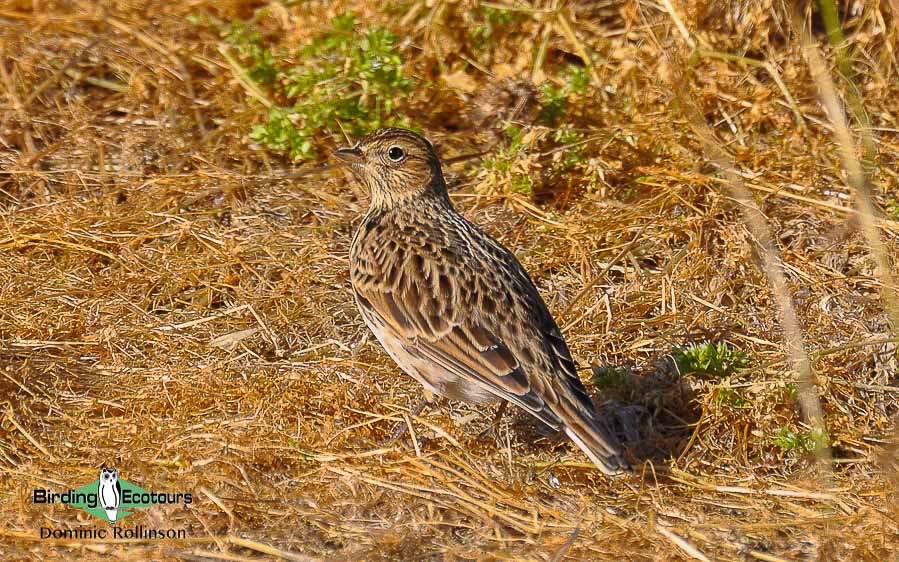
Meadow Pipit, Anthus pratensis (UK Amber List: Birds of Conservation Concern 5)
A common (often abundant) breeder in upland farmland environments across the UK. Though has declined in population numbers, still a very common species and easiest to see and most widespread of the pipits that occur in the UK. Numbers swell in the non-breeding season as migrants arrive from other parts of Europe to enjoy the relatively mild winter of the British Isles when it occurs in a wide range of lowland habitats.
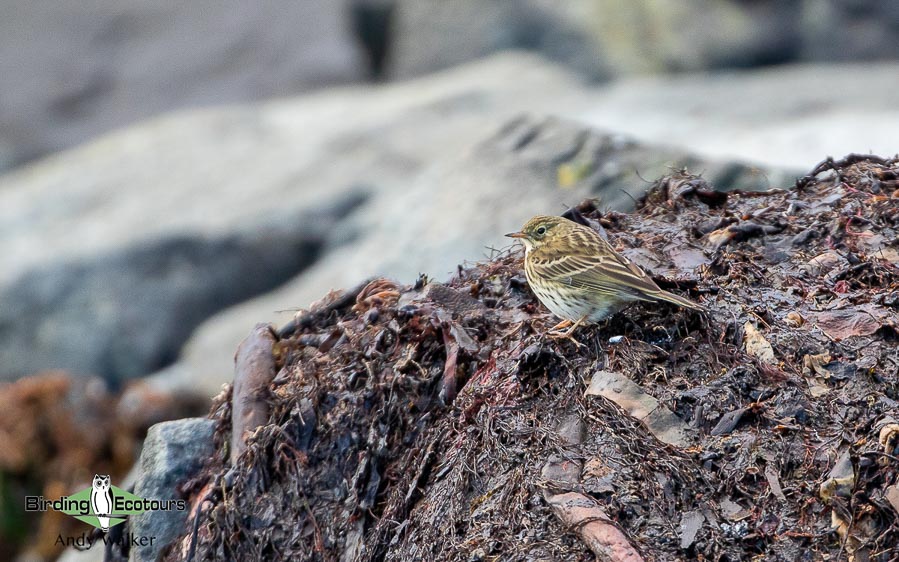
Northern Lapwing, Vanellus vanellus (UK Red List: Birds of Conservation Concern 5)
A declining species as a result of the combined impact of adult mortality during harsh winters and long-term declines in productivity that prevent recovery from cold weather (BTO 2020). But still one of the most instantly recognizable farmland birds in the UK and one that foreign visitors always want to see – it is easy to see why, they are rather special with that elongated crest! They have an amazing call (somewhat computer-gamey) that they often give while chasing perceived predators from their nest, whether that be a Carrion Crow, Eurasian Magpie, Red Fox, or human! During the winter vast flocks of these often join with European Golden Plovers and make for a spectacular sight (and sound).
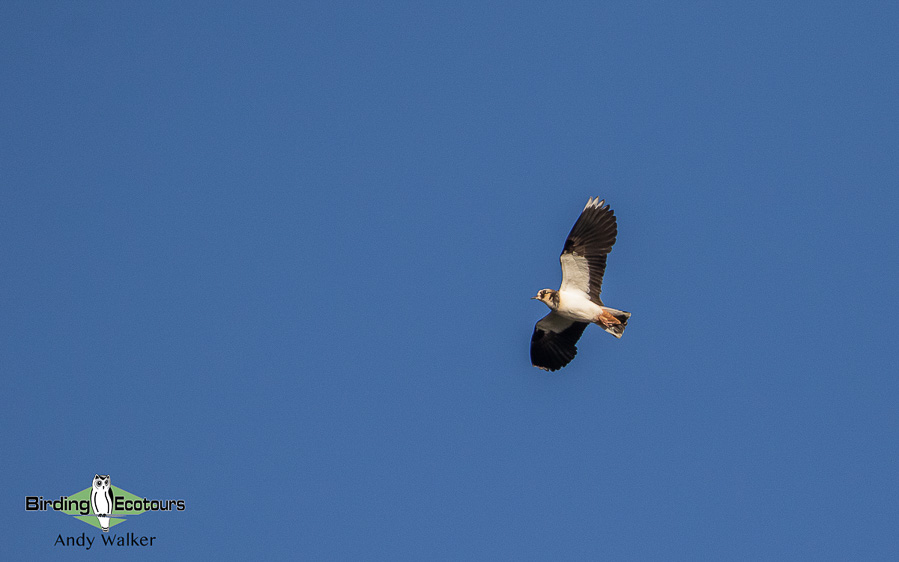
Red-legged Partridge, Alectoris rufa
A common introduced farmland bird in eastern England and Scotland. Unsurprisingly they are often rather timid, preferring to run away rather than fly. Much more common than the native Grey Partridge which has undergone massive population decline in the UK.
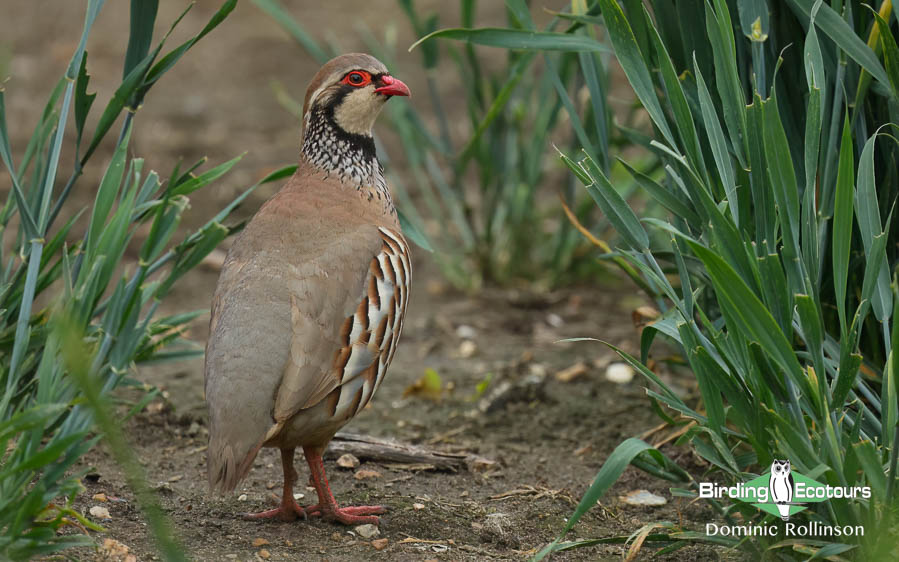
Common Kestrel, Falco tinnunculus (UK Amber List: Birds of Conservation Concern 5)
Another very common, yet decreasing species. Often observed hovering along roadsides and farmland as they hunt (principally) for small rodents, they are still a familiar sight to many across the country. For our American readers, Common Kestrel ranges in size from 12-15 inches (31-37 centimeters) in length, compared to the much smaller American Kestrel (which doesn’t occur in the UK) which measures 9 inches (23 centimeters) in length, so Common Kestrel is a much larger bird.
Little Owl, Athene noctua
Introduced into the UK in the 19th century, there are now considered to be over 10,000 pairs breeding. It is commonly found in farmland across England and in some areas, such as Yorkshire and Norfolk, it occurs in relatively high densities. It is partly diurnal and so is often seen late in the afternoon and early morning. It also habitually sits right out in the open, so great views can often be obtained.
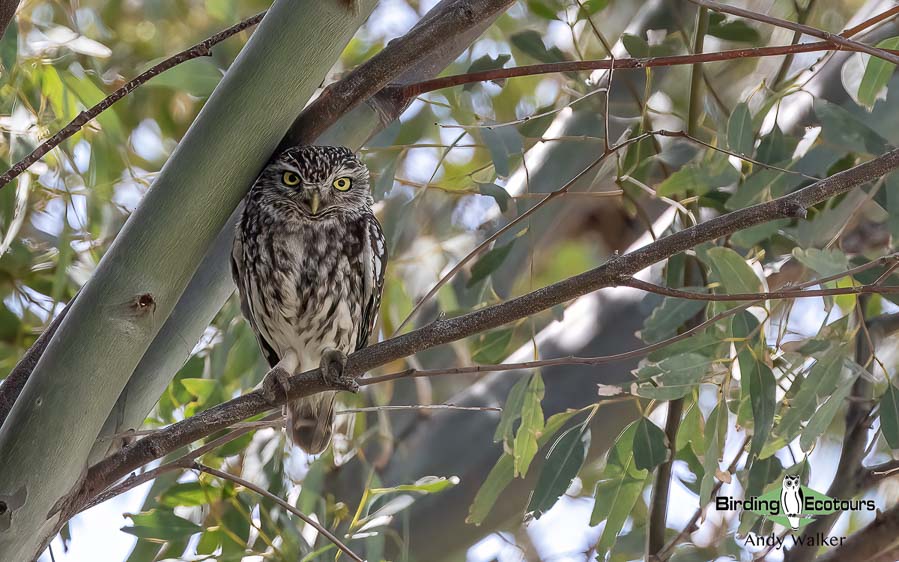
Western Barn Owl, Tyto alba
A truly spectacular nocturnal and crepuscular owl found breeding in farmland across much of the UK. It is uncommon and local and declining in many areas, but in some areas, such as Norfolk and Yorkshire in England, they occur at rather high densities, making sightings commonplace, which is great for birders and bird photographers.
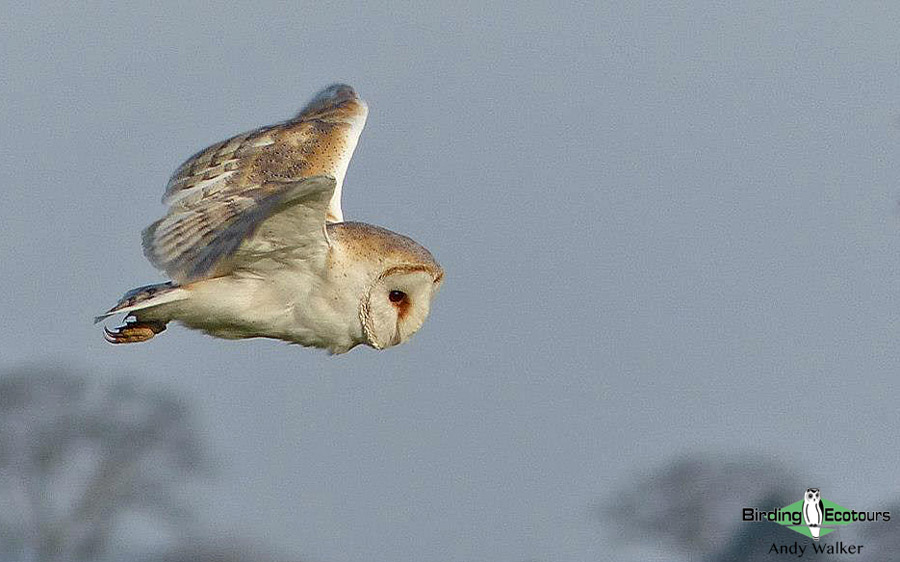
The list of common farmland and woodland birds really could just keep going on and on with species like Common Pheasant, Common Buzzard, Tawny Owl, Tree Pipit, Western Yellow Wagtail, Common Linnet, Common Reed Bunting, Eurasian Blackcap, Willow Warbler, Common Chiffchaff, Eurasian Treecreeper, Rook, Carrion Crow, Western Jackdaw, Eurasian Sparrowhawk, Barn Swallow, Mistle Thrush, Coal Tit, and Lesser Redpoll all relatively widespread and common to abundant species (some of these are migratory and only in the UK during the summer). It just goes to show the depth of species on offer here.
Seen these birds at home? Let Birding Ecotours take you further afield
Whether it’s enjoying close-up views of familiar countryside species or expanding your list with birds from further afield, we’ve got a range of birding tours to suit every season and interest.
Explore our UK and European tours
Browse our worldwide birding adventures
If you’d like any advice on which tour would best suit your needs, or if you have any questions, feel free to email us at [email protected], we’re happy to help!
Click for Common Garden Birds of the UK
Click for Common Wetland and Coastal Birds of the UK
